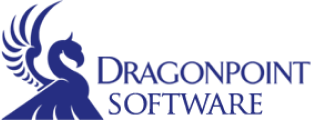If you have a love-hate relationship with your software, you’re not alone. Many businesses love the increased efficiency and the time savings that software provides but hate the features that don’t perform as expected and despise the workarounds. In more than half of the process improvement projects we’ve conducted, at least one of the findings focuses on inadequate software: “Our software doesn’t meet our current business needs and can’t support future growth.” or “People have had to develop auxiliary systems using spreadsheets to compensate for limitations of the primary business software systems.”
Why doesn’t every company have software that really works? What can you do about it?
Custom Software
Custom software starts with your unique business process. Your business doesn’t change to work within the constraints of the software – the software is designed and written specifically to work for your business, not to fit what someone else decides is “the norm.”
- Own it. When you buy custom software, you should own the application, including source code. Check your contract to be sure this is clear.
- Decide how to change it. With a well-designed application, you can quickly implement changes, adapt to new business dynamics, and continue to grow your business. Equally important, you define and prioritize the changes you need; you’re not restricted to the new features and enhancements a commercial system’s users group decides are important.
- Make choices. If your custom software is written using standard tools such as Microsoft Visual Studio, you can choose from a large pool of consultants or hire in-house programmers to support and enhance your application. You’re not limited to a few, high-cost application specialists.
- Save money on training. It will take less time for employees to learn to use the new custom software effectively (compared to a software package). Why?
- The new application will support the employee’s familiar business processes.
- A custom application uses language that is specific to your business.
- Your application includes only what you need, avoiding “feature overload.” (Feature overload occurs when you waste time going through unnecessary menu options and screens you never use to find what you really need.)
- Eliminate annual fees. Since you own the software, a custom application also saves you money by eliminating annual maintenance fees and payments for new licenses when you add employees.
So why don’t all businesses use custom software?
Not all companies are ready to make the investment. If you want great custom software, plan to spend time clearly defining your vision and requirements for the system designers and managing the project, including answering questions during development; reviewing interim deliverables; testing; and giving user feedback. You may also need to oversee creation of documentation and training programs.
If custom software doesn’t make sense for your business, consider commercial software.
Commercial Software
Commercial software, also called “packaged software,” includes applications ranging from Microsoft Word and Excel to large Enterprise Resource Planning (ERP) applications that include manufacturing, accounting, and sales functions.
- Let the experts design it. Commercial software gives you features that subject matter experts say you need. For example, commercial accounting applications will give you a way to create your general ledger and write checks (among many other functions). The experts also define the system rules, screens, menus, reports, and other functionality.
- Share the cost and save? The cost of programming is shared by all the companies that license the package; however, watch out for the “hidden” costs. For large applications such as ERP systems, in addition to the purchase price of the software, expect to pay the following.
- Service fees: You’ll spend an additional 150% to 200% of the “purchase” price for services such as installing the package, importing existing data, and training.
- Yearly fees: Most vendors charge annual maintenance fees of 15% to 30% of the original purchase price.
- Per seat licenses: If you pay for each person who uses the application (per seat licensing), you’ll be paying more as you grow.
- Customization: If you want to “customize” a package, budget for high hourly rates for application specialists who are the only ones authorized to do the work and be prepared to invest time in designing what you need, managing the customization project, and testing the results. Be sure to ask other companies who have already customized the software about how their custom modules worked with upgrades to the core package.
- Buy and install it now. You don’t have to wait for the application to be spec’d out, developed, tested, documented, and released. You can buy it and install it right away. However, you will need to spend time evaluating any commercial software against your requirements and determining which one will work best for you
- Share the pain. Share the tasks of bug reporting and feature enhancement suggestions. With other users buying the exact same application, feature enhancement and bug submission is spread among many people.
- Access public knowledge. With commercial software applications, you can go to your local book store to get additional documentation. And you can sign up for public training classes. However, both of these may be limited in scope to the amount of the author’s knowledge.
Commercial software can probably do the job if your business works like most other businesses. But when your requirements are unique, think custom software.
Ready to break free from inadequate software? Discover the power of custom software tailored to your business. Consult DragonPoint for a software solution that truly works for you.






